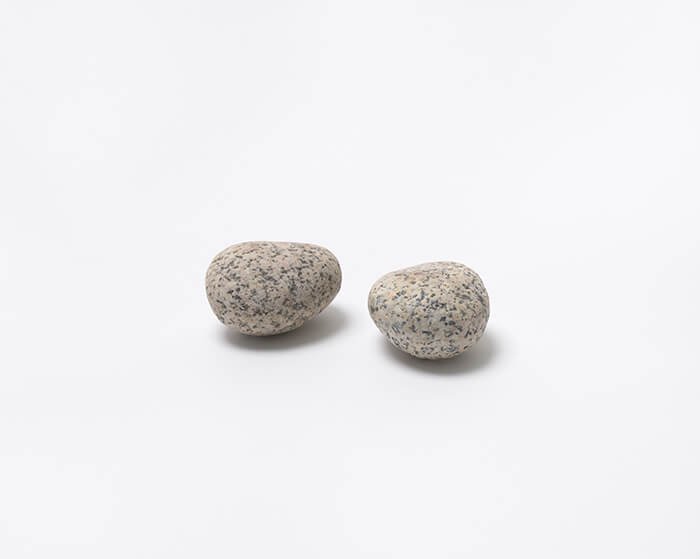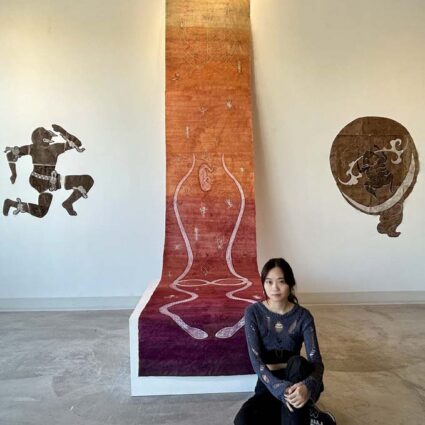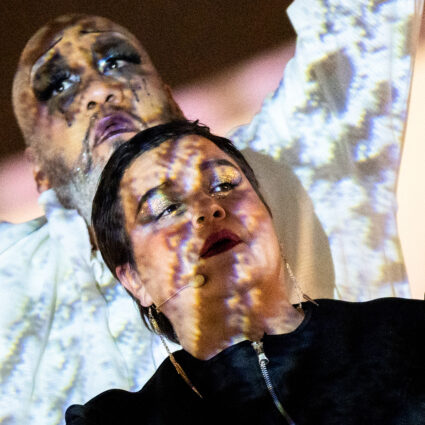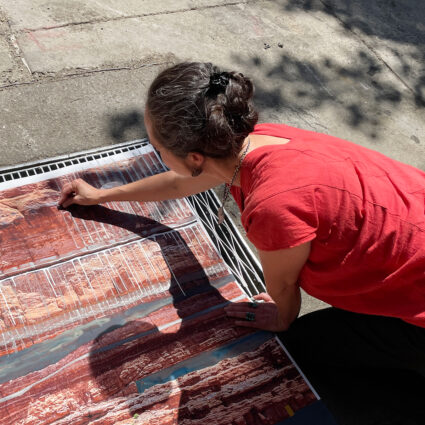
“Redescribing the Desert: Vija Celmins in the Southwest” by Frances Jacobus-Parker
Georgia O’Keeffe Museum Research Center Conversation
Tuesday, October 17, 6 – 7 pm
Vija Celmins has long been known as an “artist’s artist,” in part because she attends to her drawings, paintings, prints, and sculptures with meticulous detail. Centering on the expanses of the moon’s surface, the desert, ocean, and night sky, her works always beg a second look. Frances Jacobus-Parker, the Georgia O’Keeffe Research Center’s current predoctoral fellow (September 1-November 30, 2017), describes Celmins’s approach as “exploring the tipping point between representation and abstraction.” Her lecture, titled “Redescribing the Desert: Vija Celmins in the Southwest,” will look at the artist’s process of “redescription” in relation to the works she produced in the 1970s.
Alicia Inez Guzmán: When did you become interested in Vija Celmins?
Frances Jacobus-Parker: I first saw her work at the Museum of Modern Art in New York in 2006, in an exhibition of recent gifts from the collector Edward Broida. I was working there at the time, so I was able to visit Celmins’s artworks again and again, in person and over time. I was struck by the quiet strangeness of these objects, by what they asked of me as a viewer, what they offered, and what they withheld. I still feel that way.
What brought Celmins to the deserts of California, Nevada, Arizona, and New Mexico?
She was based in Los Angeles in the 1960s and ‘70s and often took trips to the desert, sometimes with artist-friends like Doug Wheeler and James Turrell, and sometimes just with her dog. Like many artists (and non-artists) before and since, she was drawn to the extraordinary quality of light and space in these landscapes. But beyond this, the desert shares certain qualities with the kinds of spaces she was already depicting. The desert, the ocean, the moon, the night sky—these are terrains that are familiar yet alienating, and whose vast scale destabilizes our sense of perception and orientation.
Can you describe “redescription” and its relationship to landscape?
Celmins often uses this term in interviews to characterize her treatment of source photographs and objects—she “redescribes” them rather than, say, copying. I find this word useful for how it indicates repetition and also suggests a sensorial process of traversing and transcribing a surface. I’m interested in what Celmins’s works capture of a particular landscape—for example, the granular pebbles of the desert floor—and what they leave out—the horizon, any landmarks that might root us in time and space.
Where does Celmins’s approach fit, in terms of what other postwar artists, especially during the 1960s and ’70s, were looking at and making?
Celmins is often historicized alongside West Coast pop because this is the milieu in which she made her first mature works, but her oeuvre as a whole defies easy alignment with any one movement or scene. She shares with many artists of her generation an interest in repetition, seriality, and process and anticipates a later turn to photographic appropriation. Yet her commitment to a practice of painstaking mimesis sets her apart. In an era where presenting a found photograph or object is a legitimate artistic gesture, what kind of meaning is produced when one instead replicates that object or image by hand?
I’m interested in artists who invite us to pry open the narratives we’ve inherited about art history. Celmins is one of those artists.
There aren’t many sustained studies of Celmins. What role will this research play in your larger dissertation project and the literature on the artist as a whole?
My project looks at Celmins’s work from the early 1960s to now, and my research at the O’Keeffe focuses on her land-, sea-, and skyscapes. My aim is to produce a rigorous account of her work that will lay the foundation for future scholarship and also offer new frameworks for understanding other art practices that are conceptual, critical, and mimetic. For a long time, Celmins was a bit under the radar (like many women artists of her generation, I should say). But the importance of her work is increasingly being recognized by curators, collectors, and historians of postwar art. Artists, of course, have known all along.
What is it like writing on a living artist?
In some ways it’s no different: my object of study is the work of art. Celmins has put an object out into the world, and it’s my job to do the rest. That said, being able to speak with the artist, to ask questions about materials and process and biography, is invaluable, not only for my own writing but for the work of future artists and art historians. I also feel a sense of responsibility to Celmins, to get things right.



